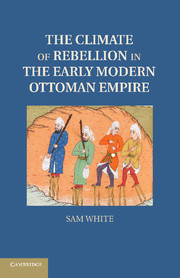Preface
Published online by Cambridge University Press: 05 February 2012
Summary
This book began as an attempt to understand the impact of human land use on the environment of the Near East during early modern times. In the course of that research, I started to look at a number of climate studies, including new data from the analysis of tree rings. It was then I discovered that Ottoman lands had entered their longest drought in the past six centuries from 1591 to 1595. Recalling the outbreak of the devastating Celali Rebellion in Anatolia in 1596, I figured the timing had to be more than mere coincidence. However, as I worked at the problem, the path from climate to crisis proved more complicated than I had imagined, and the ramifications of these events proved much more far-reaching than I had anticipated. In the end, that question became the focus of a whole new study.
In the attempt to understand how the Little Ice Age triggered a general crisis in Ottoman lands, my research shot out in a number of directions. Ultimately, this work had to cover a wide range of topics from provisioning, settlement, agriculture, and land tenure, to demographics, climatology, and the course of famines and epidemics. In some cases, other historians had already cleared the way for me, but as often as not, I was forced to cut my own trails through the evidence, sometimes leading to unexpected conclusions.
- Type
- Chapter
- Information
- The Climate of Rebellion in the Early Modern Ottoman Empire , pp. xi - xivPublisher: Cambridge University PressPrint publication year: 2011

